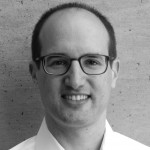CGBC Research & Innovation Talks: “10 Questions Regarding Life Cycle Design”
The Harvard Center for Green Buildings and Cities will present a series of Research & Innovation Talks. Given by members of the CGBC Research Team, talks will highlight and discuss projects underway at the Center.
On Tuesday, February 2nd, CGBC Post Doctoral Fellow Matan Mayer will present: “10 Questions Regarding Life Cycle Design.”
1:15 pm – 2:15pm
20 Sumner Road, Room 1D
Lunch will be provided.
Talks are open to members of the Harvard community. Space is limited. Please RSVP to Jeff Fitton ([email protected]).

Matan Mayer, Ph.D, Post Doctoral Fellow »
Matan’s work focuses on life cycle innovation in the built environment. It seeks to combine developments in manufacturing technology, material science, assembly techniques, and digital design platforms for the purpose of achieving leaner construction and deconstruction processes. Prior to his current position at the CGBC, Matan completed a doctorate at the GSD Design Robotics Group, a residency at the Harvard Innovation Lab Venture Incubation Program, as well as research fellowships at the Institute for Lightweight Structures and Conceptual Design at the University of Stuttgart, the Composite Construction Laboratory at the Swiss Federal Institute of Technology, and the Emerging Material Technologies Group at the University of Arizona. In addition to post professional masters and doctoral degrees from Harvard, he holds a professional Bachelor of Architecture degree from Tel Aviv University.
